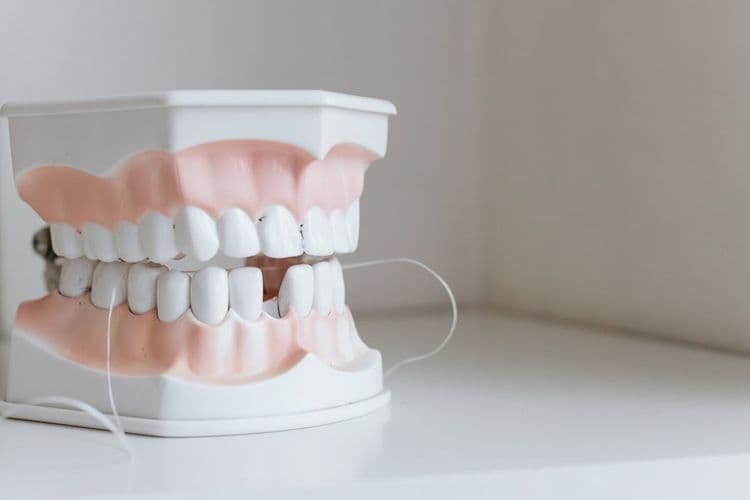In the domain of oral hygiene, the debate between the use of traditional floss and flossers has been ongoing. Both have been recognized for their effectiveness in maintaining oral health and removing plaque. However, the choice between the two often boils down to personal preference and ease of use. Could one be objectively superior to the other regarding overall dental health benefits? This compelling topic invites an exploration into the relative merits of flossers versus traditional floss, guided by scientific evidence, cost-benefit analysis, and expert opinions.
Understanding Dental Floss
Dental floss, a staple in oral hygiene, is a thin thread-like material specifically designed to dislodge food particles and plaque from between your teeth. There are various floss types available in the market, including waxed, unwaxed, thick, thin, flavored, and unflavored. Waxed floss tends to slide more easily between teeth and is less likely to fray, while unwaxed floss can be more effective at removing plaque. Floss thickness should be chosen based on the spacing of your teeth. Floss techniques also differ, but the most effective method involves wrapping the floss around your fingers and gently moving it up and down between each tooth. The key is to guarantee complete coverage while avoiding injury to the gums.
The Evolution of Flossers
As the field of dental hygiene has advanced, so too has the technology and tools available for maintaining oral health, leading to the development of flossers. The history of flossers traces back to the late 20th century when dental professionals began seeking alternatives to traditional string floss. The initial models were simple plastic devices with a piece of floss strung between two prongs. However, driven by technological advancements, flossers have evolved into sophisticated tools with ergonomic designs, built-in toothpicks, and even electric models that use water pressure for cleaning. Today’s flossers are a reflection of the innovation within the field of dental hygiene, offering convenience and efficiency without compromising on oral health.
Comparing Effectiveness: Flossers vs. Floss
The effectiveness of flossers versus traditional floss is a critical aspect to evaluate when prioritizing oral hygiene. This comparison requires an analysis of each tool’s unique benefits, from accessibility and ease of use to the effectiveness in removing plaque and preventing gum disease. This discussion will focus on these key differences, providing a thorough understanding of both flossers and traditional floss.
Understanding Flossers
While traditional string floss has been a staple in oral hygiene routines for decades, the advent of flossers has stirred debates regarding their effectiveness in comparison. Flossers, available in various types such as disposable, electric, and water flossers, offer a different approach to oral care. The design of these tools allows for easy navigation between teeth, potentially making the task less intimidating. However, understanding flosser maintenance is essential. For example, disposable flossers should be replaced after each use, while electric and water flossers require regular cleaning to prevent bacteria build-up. Despite the varying methods, the ultimate objective remains the same: to dislodge food particles and plaque from between teeth, promoting ideal dental health.
Traditional Floss Benefits
Turning our attention from flossers, we now examine the traditional string floss, which has its unique set of benefits. One of the prominent traditional floss advantages lies in its flexibility. It can be maneuvered with ease, allowing for a thorough cleaning between every tooth and under the gumline, areas often missed by flossers. This is highly dependent on proper floss technique, which involves using a gentle sawing motion to remove plaque without damaging the gums. In addition, traditional floss is versatile and can be adjusted to the user’s grip strength and comfort. It is also highly portable, easily fitting into pockets or purses for on-the-go dental hygiene. These benefits underline the effectiveness of traditional floss in maintaining oral health.
Cost Analysis: Flossers and Floss
In evaluating the financial implications of choosing between flossers and traditional floss, several factors come into play. A thorough cost comparison should take into account the initial purchase price, the longevity of the product, and the number of uses one can get out of it. While flossers may seem more expensive initially, they often come in packs, reducing the cost per use. Traditional floss, on the other hand, is generally cheaper upfront but may run out faster depending on usage patterns. Price factors such as these should be considered along with personal preferences and dental recommendations. Ultimately, both flossers and traditional floss can be cost-effective options, depending on individual needs and habits.

Impact on Oral Health: Flossers
We now turn our attention to the impact flossers have on oral health. Initially, we will evaluate the effectiveness and use of flossers, examining how they compare to traditional floss. This will lead us to contemplate whether flossers provide a superior or inferior alternative to regular flossing methods.
Flossers: Effectiveness and Use
Dental hygiene is greatly enhanced by the use of flossers, making them an important tool in oral health care. Advancements in flosser technology have enabled the creation of devices that are not only easy to use but also highly effective at removing plaque and food debris from between teeth. User experiences often highlight the convenience of flossers, as well as their ability to reach areas of the mouth that traditional floss might miss. Flossers can help reduce the risk of gum disease and tooth decay, contributing to overall oral health. The effectiveness of any dental tool, however, depends largely on proper usage. Consequently, understanding how to use a flosser correctly is vital to achieving the best results.
Comparing Flossers and Floss
While flossers have been lauded for their effectiveness and ease of use, it is essential to compare them with traditional dental floss to truly understand their impact on oral health. Flossers, in comparison to regular floss, offer a convenient and manageable approach to flossing, especially for those with limited dexterity. However, their design may not allow for the same thoroughness in cleaning interdental areas as traditional floss. Different flossing techniques and user experiences also play a role in the effectiveness of both methods. Some users find flossers more comfortable and easier to use, while others prefer the control that comes with manually handling floss. Ultimately, the choice between flossers and floss may depend on personal preferences, comfort, and adaptability.
Flossers Versus Traditional Flossing
How do flossers impact oral health when compared to traditional flossing? To address this, an understanding of various flosser types and flossing techniques is essential.
- Pre-threaded Flossers: These are designed with a short piece of floss already threaded. They are generally more user-friendly than traditional floss, especially for those with limited dexterity.
- Water Flossers: They use a pressurized stream of water to remove food particles and plaque. Research suggests that they might be more effective than string floss for reducing gingivitis and gum bleeding.
- Air Flossers: Using a burst of air and micro-droplets, they clean between teeth. They are considered as effective as floss for plaque removal.
Hence, the impact of flossers on oral health varies based on the type and technique used.
Impact on Oral Health: Traditional Floss
Despite its longstanding history, traditional floss continues to play a pivotal role in maintaining ideal oral health. Proper flossing techniques, including a gentle sawing motion and wrapping the floss around each tooth, can effectively remove plaque and food particles from areas that a toothbrush cannot reach. This contributes greatly to overall oral hygiene, reducing the risk of gum disease and tooth decay. Furthermore, flossing stimulates gums, promoting their health and resilience. Traditional floss, due to its flexibility, can be maneuvered with precision, ensuring thorough cleaning. Despite the advent of modern flossers, traditional floss remains a cornerstone of oral health routines. Its benefits, when incorporated effectively, are considerable and cannot be underestimated.
Personal Preference: Comfort and Convenience
In considering the choice between traditional floss and modern flossers, comfort and convenience often play a significant role. Personal routines and the overall user experience are heavily influenced by these aspects.
- Traditional floss, being thin and flexible, allows for precision. However, it can be awkward to handle, especially for those with limited dexterity.
- Flossers, on the other hand, offer a user-friendly design. They have handles that allow for easy maneuvering, enhancing the user experience.
- Despite the potential benefits of flossers, some individuals may find them less comfortable due to their rigidity.
Expert Opinions: Dentists’ Recommendations
Drawing from the wealth of expertise in dental care, a multitude of dentists often provide recommendations on the use of flossers versus traditional floss. Dentist insights reveal a shared consensus that both flossers and traditional floss effectively remove plaque and prevent gum disease when used correctly. However, the choice between the two often boils down to personal preference and dexterity. Flossers, being easier to handle, are often recommended for children or those with limited manual dexterity. Traditional floss, despite requiring more skill, allows for greater control in reaching tight spaces. These professional recommendations underline the importance of individual suitability and proper technique, emphasizing that the best tool is the one that is used consistently and correctly.
Frequently Asked Questions
What Materials Are Typically Used in the Production of Flossers?
Flossers are typically produced using a combination of plastic and nylon. However, with advancements in flosser technology, biodegradable materials like cornstarch and silk are increasingly being used for more environmentally friendly options.
Are There Any Environmental Concerns Related to Using Disposable Flossers?
Yes, environmental concerns exist with disposable flossers due to non-biodegradable materials often used in their production. Sustainable alternatives, such as biodegradable options, are encouraged to mitigate the environmental impact of these dental hygiene products.
How Often Should I Replace My Floss or Flosser?
Dental professionals recommend replacing your floss or flosser after each use. Frequency recommendations hinge on effective flossing techniques, ensuring ideal oral hygiene and preventing bacterial transfer between different sections of the mouth.
Can Flossers Be Used by Children or People With Braces?
Yes, flossers can be used by both children and individuals with braces. They are designed for ease of use, ensuring child safety. However, their effectiveness on braces may vary, requiring additional tools for thorough cleaning.
Are There Any Known Allergic Reactions to Floss or Flossers?
Rarely, certain individuals may experience allergic symptoms to dental materials used in floss or flossers, such as nylon or Teflon. Symptoms could include gum irritation or inflammation. However, such reactions are uncommon.


